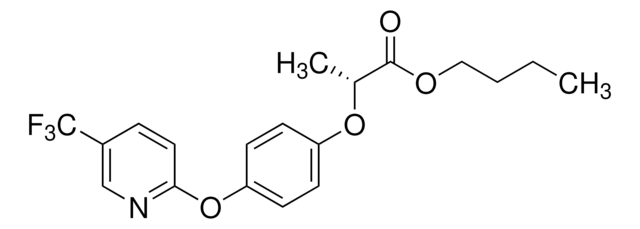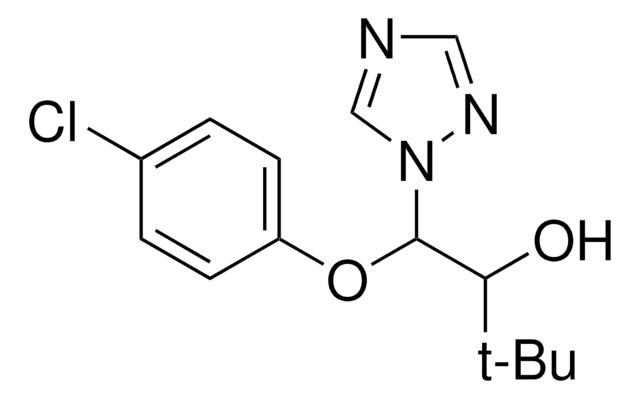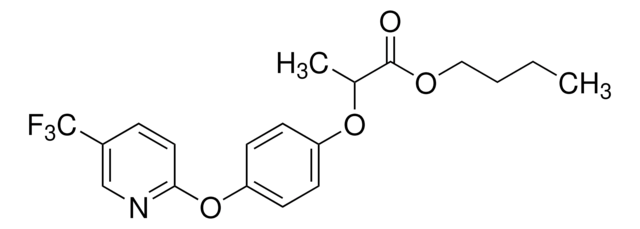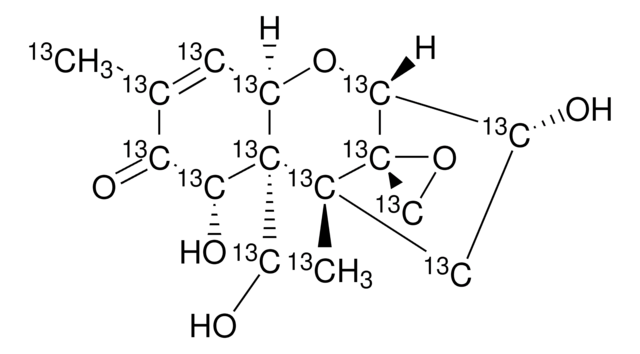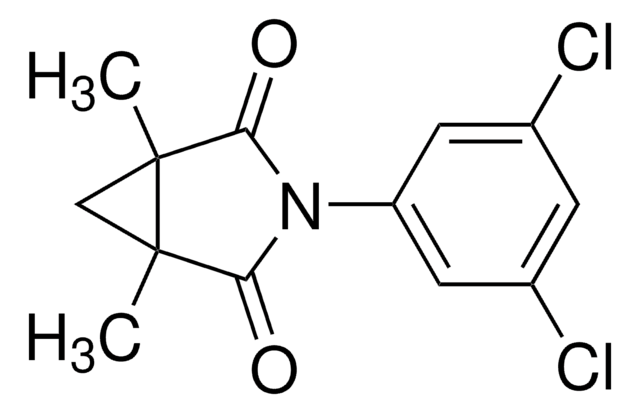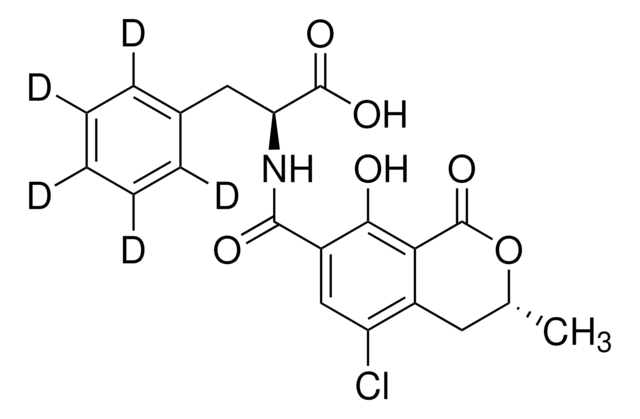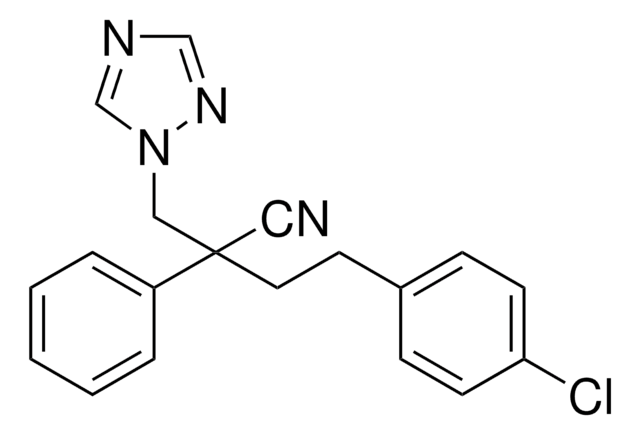Wichtige Dokumente
36783
Fluazifop-butyl
PESTANAL®, analytical standard
About This Item
Empfohlene Produkte
Qualität
analytical standard
Produktlinie
PESTANAL®
Haltbarkeit
limited shelf life, expiry date on the label
Anwendung(en)
agriculture
cleaning products
cosmetics
environmental
food and beverages
personal care
Format
neat
SMILES String
CCCCOC(=O)C(C)Oc1ccc(Oc2ccc(cn2)C(F)(F)F)cc1
InChI
1S/C19H20F3NO4/c1-3-4-11-25-18(24)13(2)26-15-6-8-16(9-7-15)27-17-10-5-14(12-23-17)19(20,21)22/h5-10,12-13H,3-4,11H2,1-2H3
InChIKey
VAIZTNZGPYBOGF-UHFFFAOYSA-N
Suchen Sie nach ähnlichen Produkten? Aufrufen Leitfaden zum Produktvergleich
Rechtliche Hinweise
Signalwort
Danger
H-Sätze
Gefahreneinstufungen
Aquatic Acute 1 - Aquatic Chronic 1 - Repr. 1B
Lagerklassenschlüssel
6.1C - Combustible acute toxic Cat.3 / toxic compounds or compounds which causing chronic effects
WGK
WGK 3
Flammpunkt (°F)
Not applicable
Flammpunkt (°C)
Not applicable
Persönliche Schutzausrüstung
Eyeshields, Gloves, type ABEK (EN14387) respirator filter
Analysenzertifikate (COA)
Suchen Sie nach Analysenzertifikate (COA), indem Sie die Lot-/Chargennummer des Produkts eingeben. Lot- und Chargennummern sind auf dem Produktetikett hinter den Wörtern ‘Lot’ oder ‘Batch’ (Lot oder Charge) zu finden.
Besitzen Sie dieses Produkt bereits?
In der Dokumentenbibliothek finden Sie die Dokumentation zu den Produkten, die Sie kürzlich erworben haben.
Unser Team von Wissenschaftlern verfügt über Erfahrung in allen Forschungsbereichen einschließlich Life Science, Materialwissenschaften, chemischer Synthese, Chromatographie, Analytik und vielen mehr..
Setzen Sie sich mit dem technischen Dienst in Verbindung.